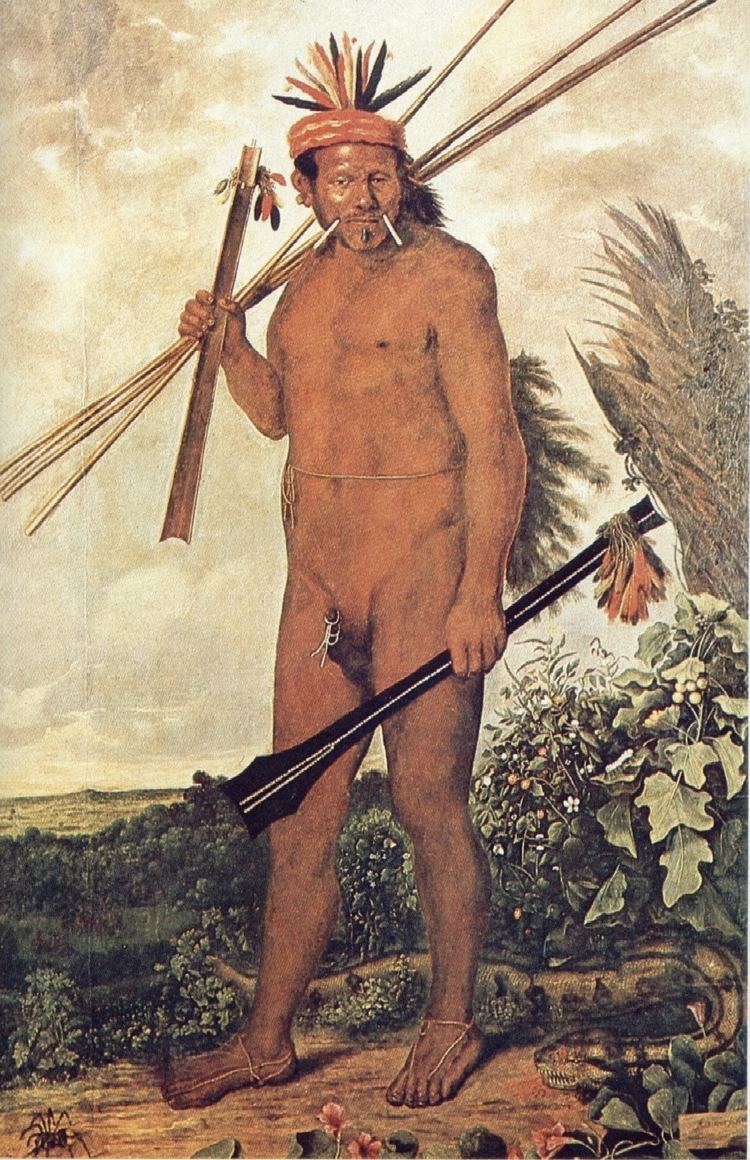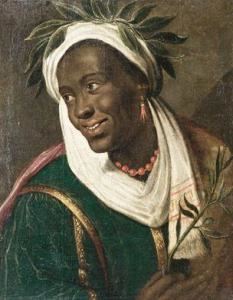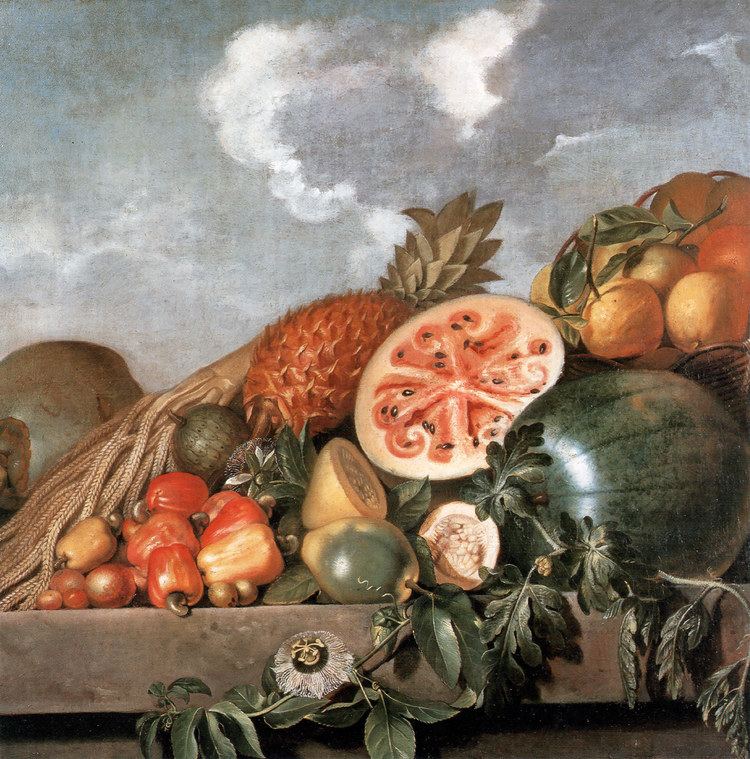Name Albert Eckhout | Role Artist | |
 | ||
Died 1665, Groningen, Netherlands Artwork Nature morte aux fruits tropicaux | ||
Albert eckhout paintings
Albert Eckhout (c.1610–1665) was a Dutch portrait and still life painter. Eckhout, who was born in Groningen, was among the first European artists to paint scenes from the New World. In 1636 he traveled to Dutch Brazil, where he stayed until 1644, invited by count John Maurice, Prince of Nassau-Siegen. There, he painted portraits of the natives, slaves and mulattos of Brazil in the seventeenth century, besides numerous sketches of plants and animals.
Contents
- Albert eckhout paintings
- brazil the new world of albert eckhout brasil o novo mundo de albert eckhout
- Work in Dutch Brazil
- References

Eckhout is also famous for his still-life paintings of Brazilian fruits and vegetables. The majority of his work is now located in the National Museum of Denmark in Copenhagen. In art history, he is taken to be part of Baroque. Minor planet 11241 Eckhout is named for him.

brazil the new world of albert eckhout brasil o novo mundo de albert eckhout
Work in Dutch Brazil

Eckhout was born in Groningen, the son of Albert Eckhout and Marryen Roeleffs, but his training as an artist and early career are unknown. Many works attributed to him are unsigned. He was in the entourage of Dutch governor-general of Brazil Johan Maurits, Prince of Nassau-Siegen, who took him and fellow painter Frans Post to Dutch Brazil to have them record the country's landscape, inhabitants, flora and fauna. Eckhout focused on the people, plants and animals of the region. He painted eight life-size ethnographic representations of Brazil's inhabitants, twelve still lifes and a large piece of dancing natives.

These ethnographic works, done between 1641 and 1643 for Maurits, were subsequently gifted to Maurits's cousin, King Frederick III of Denmark, and they remain in Copenhagen. Alexander von Humboldt saw the paintings in 1827, as Brazilian Emperor Dom Pedro II in 1876, both of whom praised them enthusiastically.

While Post was focusing on painting maps and landscapes, Eckhout made pieces about the inhabitants and still lifes with fruits and vegetables. His work is said to give the first realistic image of the native population, part of the Tupi and Tapuia tribes. One of his famous works is of a calmly composed Tupian woman, who holds a human hand and has a human leg in her basket, an example of cannibalism. The Tapuya dance, performed by eight Tapuia Indians with their characteristic mushroom hair style, cudgels and spears, deals with the preparation for the confrontation with the enemy. This picture was much more in accordance with the mental image of the natives back in Europe.

Another famous work of art by Eckhout from his time in Brazil is the Mameluca Woman. This is a depiction of a woman in a flowing white dress balancing a basket of flowers in one hand. Her other hand is lifting her dress to reveal a small portion of her leg. She is believed to be a mix of European and the indigenous people of Brazil given by the title “Mameluca.” This painting has many aspects that were characteristic of Eckhout's other paintings from his time in Brazil. The two guinea pigs at the woman's feet show his interest in the natural life of Brazil. In addition the flowers that she is carrying and the plant life around her were Eckhout's way of representing the fertility of Brazil and drawing attention to the successful production of crops there.
For a couple of reasons, the series of twelve still-life paintings by Albert Eckhout are unique. First, they show Brazil's abundant crops and second, these are the only known still-life paintings from the seventeenth century showing an overcast sky in the background.
